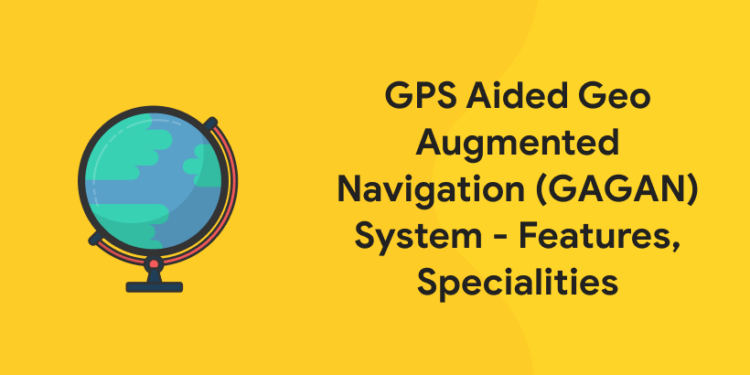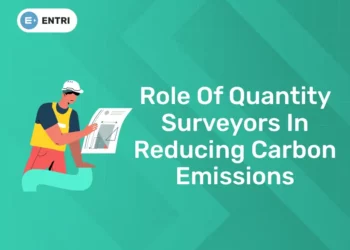Table of Contents
GPS Aided GEO Augmented Navigation is Full form of GAGAN. The Indian government has taken the initiative to offer the first satellite-based navigation systems in the nation. A global navigation satellite system (GNSS) receiver’s precision is improved by this system’s reference signals.
It is a Space Based Augmentation System (SBAS) developed collaboratively by ISRO and AAI to provide the best possible navigational services across the Indian FIR (Flight Information Region), with the capability of extending to neighboring FIRs. GPS alone itself cannot meet the accuracy, integrity, and availability requirements of the ICAO. GAGAN corrects for timing, satellite orbit, and GPS signal flaws brought on by ionosphere disturbances. It also offers vital information regarding the condition of each satellite.
What is GAGAN System?
- It is a Space Based Augmentation System (SBAS) that ISRO (Indian Space Research Organisation) and AAI collaboratively developed in order to offer the best navigational services across Indian FIRs with the potential to expand to neighboring FIRs.
- Your position will be more accurately determined thanks to the GPS signal adjustments provided by the GAGAN satellites and ground stations.
- It is the first system of its kind created for India and its surrounding equatorial nations.
- In 2015, the DGCA (Directorate General of Civil Aviation) certified the GAGAN System for operations involving Approach with Vertical Guidance (APV 1) and En-route (RNP 0.1).
- Only four space-based augmentation systems are currently in use worldwide: Japan (EGNOS), the US (WAAS), Europe (EGNOS), and India (GAGAN) (MSAS).
- Aviation, forest management, railroad signalling, atmospheric research, natural resource and land management, location-based services, mobile, and tourism are some of the industries involved.
- The GAGAN GEO footprint stretches from Africa to Australia, and the GAGAN system can accommodate 45 reference stations for extension to nearby nations.
- GAGAN offers a civil aviation navigation signal that complies with the Global Navigation Satellite System (GNSS) Panel’s (GNSS Panel) Standards and Recommended Practices (SARPs) of the International Civil Aviation Organization (ICAO).
Features of GAGAN System
- It is a Satellite Based Augmentation System (SBAS) created by the Indian Space Research Organization and the Airports Authority of India (AAI) (ISRO).
- Establishing, deploying, and certifying satellite-based augmentation systems for safety-of-life civil aviation applications for Indian airspace is the main goal of this project.
- It is crucial in applications involving life safety in transportation, delicate commercial uses, and liability-critical applications requiring legal action.
- By building ground-based navigational infrastructure, it gives free enhanced satellite navigation signals by resolving errors in GPS signals.
- The system is compatible with various global SBAS systems, including US-WAAS, European EGNOS, Japanese MSAS, and others.
- Its development is thought to have cost 774 crore rupees.
- It will make it possible to switch the air traffic control system to satellite-based navigation that will allow for seamless airspace coverage from Australia to Africa as well as from west Asia to China and Russia.
Attempt Free General Knowledge Mock test! Download Entri App!
GAGAN Architecture
The core elements of the GAGAN Architecture are:
Space Segment
Three operational GEO satellite
- GSAT-8: Launched in March 2011.
- GSAT-10: Launched in April 2012.
- GSAT-15: Launched in November 2015.
Ground Segment
The 15 Indian Reference Stations (INRES), which can accommodate up to 45 users, are situated in Ahmedabad, Bangalore, Bhubaneswar, Kolkata, Delhi, Dibrugarh, Gaya, Goa, Guwahati, Jaisalmer, Jammu, Nagpur, Porbandar, Port Blair, and Trivandrum. The Indian Master Control Center (INMCC), which consists of two operating sites in Delhi and Bangalore, analyses the data from the INRESs to determine its level of integrity and compute differential corrections. Through its associated Indian Land Uplink Station, the two INMCC’s SBAS message is uplinked to the GEO satellites (INLUS)
User Segment
GPS receivers using the same WAAS-compatible technology as GAGAN that can utilise the GAGAN Signal-in-Space (SIS). Civil aviation user equipment must be approved against a number of standards.
How GAGAN Operates?
- The Global Navigation Satellite System (GAGAN) processes data at numerous INRES that are placed strategically to provide coverage for the necessary service volume.
- Data is sent to INMCC, which processes it to generate differential corrections and residual errors for monitored satellites and a preset ionospheric grid point using data from several INRES.
- Information from INMCC is received by INLUS and uplinked to the GAGAN GEO Satellite along with a GEO Navigation message.
- To improve accuracy, availability, and data integrity, this data is downlinked to users through L band range signal frequencies with GPS type modulation by the GAGAN GEO satellite.
Prepare for General Knowledge Exam! Download Entri App!
Benefits of GAGAN System
- The GAGAN-enabled GPS SXTREO-T51 is used to efficiently manage animal resources and monitor forests.
- It can offer Indian Railways navigational support, which they can employ for track alignment and signalling when a train approaches the crossing region.
- The GAGAN system will also be used by the Road Asset Management System (RAMS), which is planned to be constructed for all of India’s National Highways.
- Road traffic can be managed in real-time with GAGAN signals.
- The GAGAN technology also serves as the foundation for GEMINI, a gadget designed to properly communicate and distribute emergency information with fisherman.
- In essence, GAGAN can be used to rectify the GPS signal and enhance air traffic control. The method will simplify the movement of aircraft to small airports without navigational aids. Airports with stricter landing visibility standards will gain since a satellite-based system like GAGAN will lessen their reliance on these conditions.
- The GAGAN Message Service (GMS), which was put into place by AAI and the Indian National Centre for Ocean Information Services (INCOIS), can send alert messages to fishermen, farmers, and those affected by disasters about the occurrence of natural disasters like floods and earthquakes, among other things.
GAGAN Signals and Performances
The L1 and L5 channels, with modulation akin to the Global Positioning System (GPS), are used by the GAGAN GEO satellites to transmit SBAS navigation data. The ICAO SARPS Appendix B for aspects of the signal in space and the RTCA MOPS DO-229 for the minimum performance standards applicable to the airborne SBAS receiver equipment both provide the specification of the SBAS message data format. The EGNOS SBAS Message Format Explained provides a detailed explanation of the message format.
GAGAN is made to achieve a level of performance that
- APV 1.0 over the Indian land mass.
- RNP 0.1 over the oceanic region, within the Indian Flight Information Region (FIR).
The Director General of Civil Aviation (DGCA) certified the GAGAN system to RNP0.1 service level on December 30, 2013, then on April 21, 2015, it was certified for approach with vertical guidance (APV1) (both have been renewed for up to 18 July 2022). As of this date, aircraft having SBAS receivers will be able to use GAGAN Satellite in Indian airspace for approach operations with vertical guidance and enroute navigation. The gap between the EGNOS and MSAS coverage areas was covered by the availability of the GAGAN signal.
Attempt Free General Knowledge Mock test! Download Entri App!
GAGAN System FAQs
What is the coverage area of GAGAN?
The GAGAN GEO footprint stretches from Africa to Australia, and the GAGAN system can accommodate 45 reference stations for extension to nearby nations.
Is IRNSS better than GPS?
On the L5 band, the IRNSS satellite relays. IRNSS may soon be accurate to 2m according to upgrades that call for a constellation of 11 satellites. Nearly ten times more precise than the 20 meter average GPS accuracy. However, at this time, one can still anticipate an accuracy of 10–12 meters.
What is IRNSS?
An autonomous regional satellite navigation system that offers precise real-time positioning and timing services is the Indian Regional Navigation Satellite System (IRNSS), often known as NavIC (acronym for Navigation with Indian Constellation).
I hope you found this post on the GPS Aided Geo Augmented Navigation (GAGAN) System useful. Entri App provides all the information you require about the topic. The most effective practice examinations for all of the Kerala PSC exams are provided by Entri App. Get the Entri App and start getting ready for the whole preparation. To make sure you are properly prepared for the Kerala PSC and other government exams, we offer you the best tools and resources. We provide PDFs of the old test questions, together with detailed explanations and solutions. Downloading the Entri app is all that is required to get ready.














